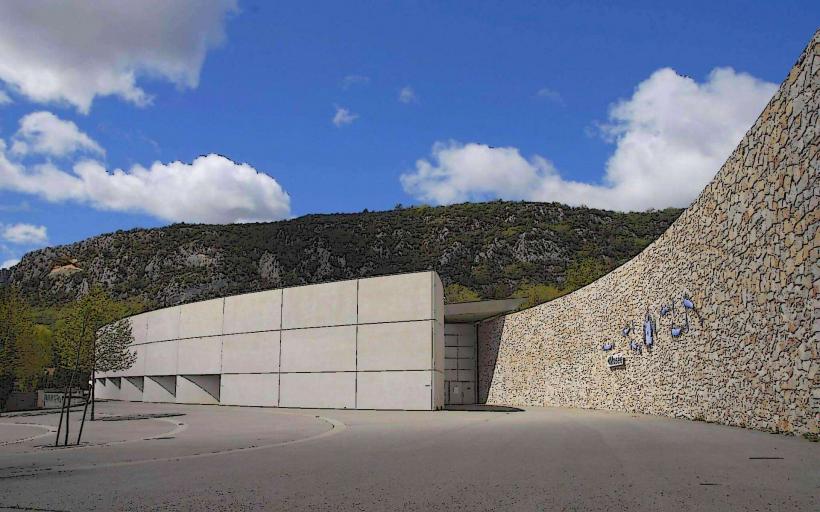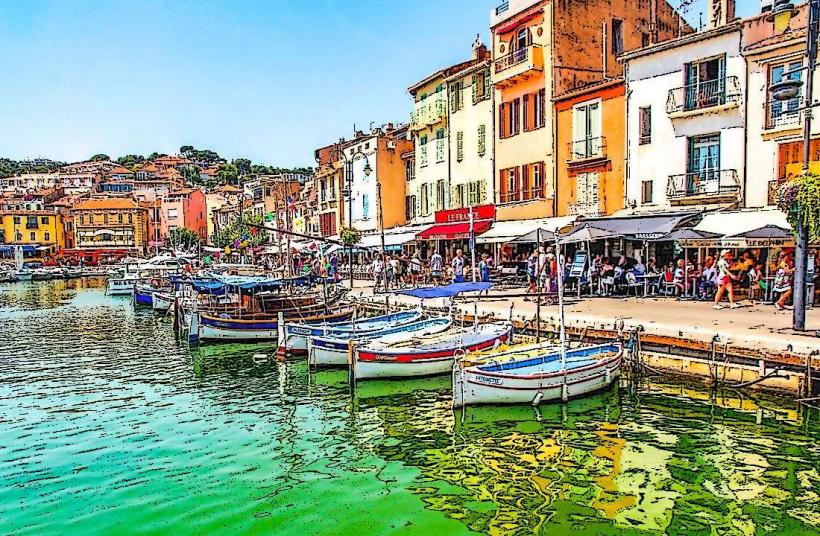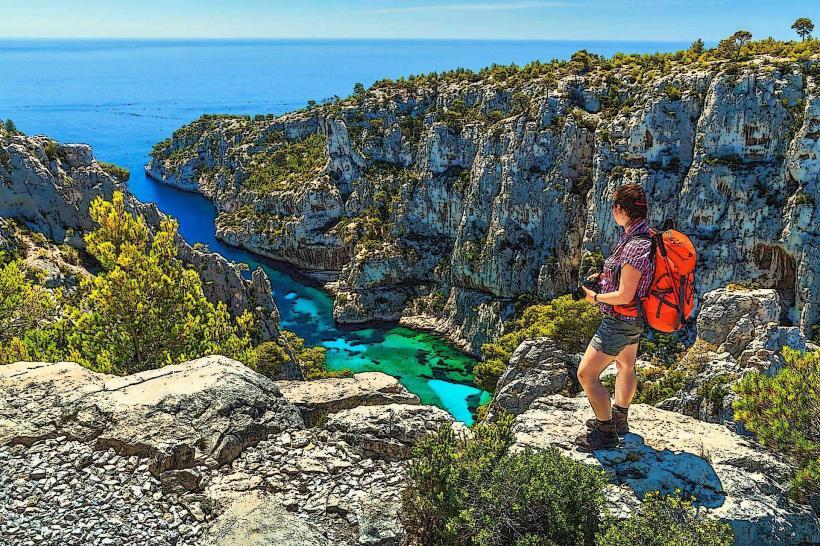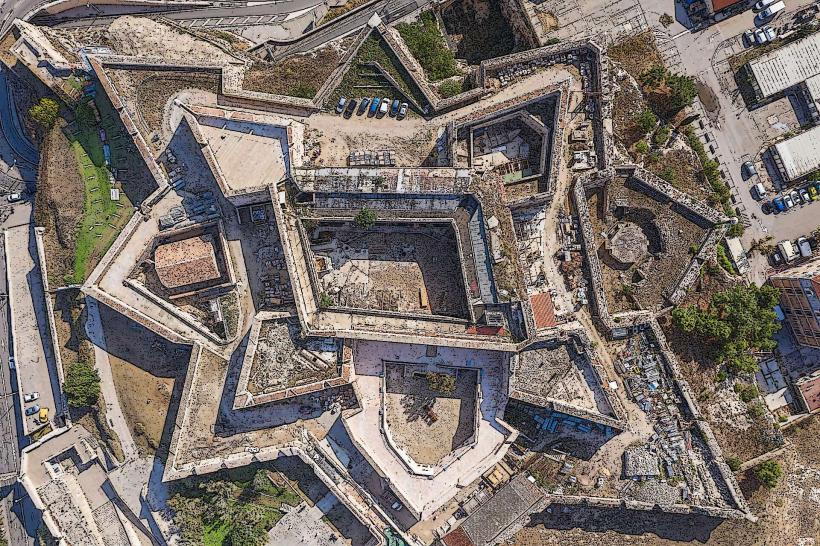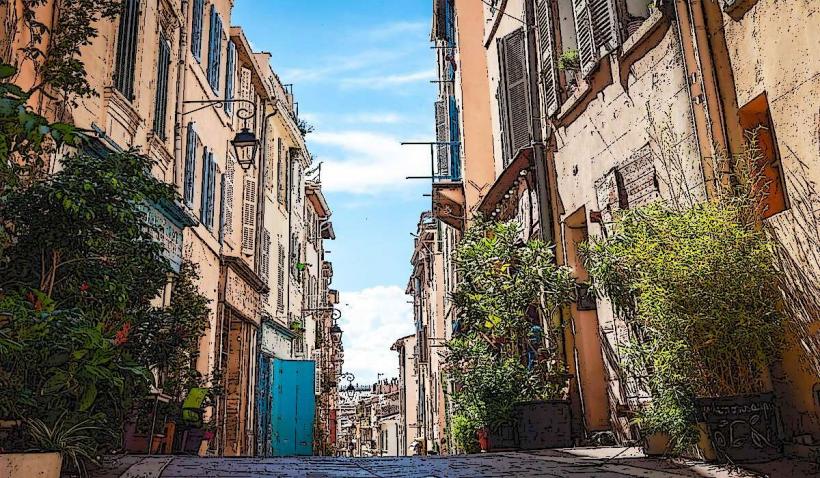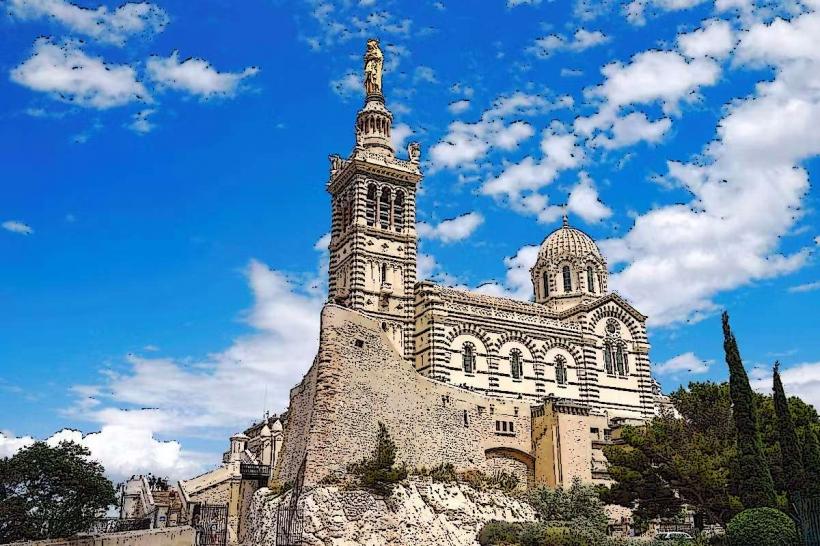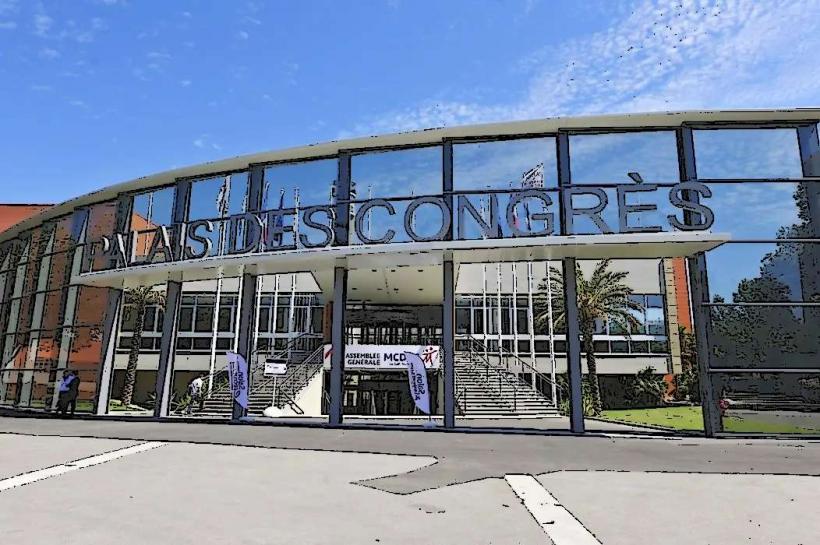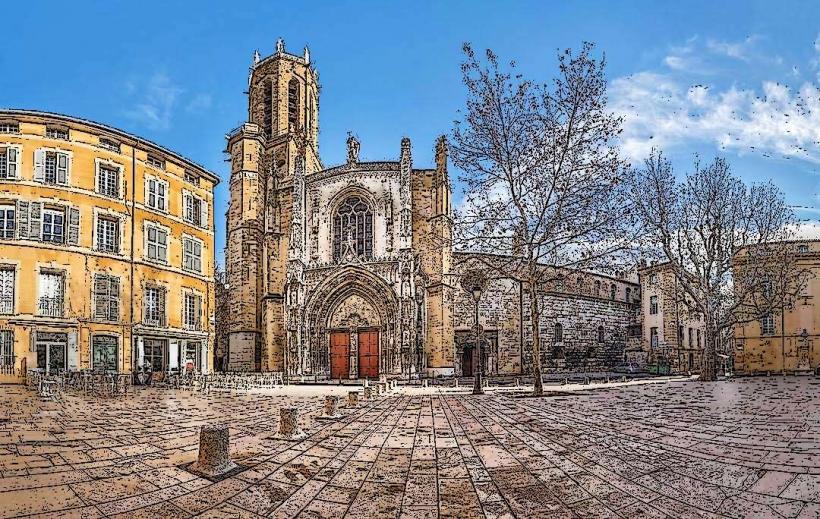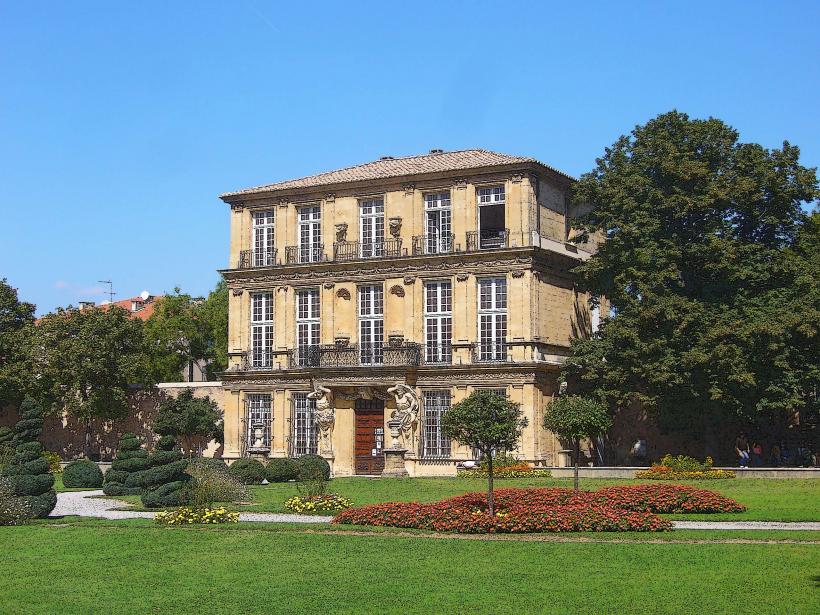Information
Landmark: Fort Saint-JeanCity: Marseille
Country: France
Continent: Europe
Fort Saint-Jean is another historically significant fortress located in Marseille, France, near the Old Port. It is one of the city's key landmarks, representing the city’s military history and its strategic importance in the Mediterranean. The fort offers spectacular views of the port, the MuCEM (Museum of European and Mediterranean Civilisations), and the surrounding area.
1. History and Background
Fort Saint-Jean was built in the 17th century, during the reign of King Louis XIV, as part of a broader initiative to strengthen the city's defenses and assert royal power over Marseille. The construction of the fort was part of a larger military strategy to fortify French coastal cities in the wake of growing tensions with Spain and other European powers.
Construction: The fort was designed by Pierre Puget, a famous French architect and engineer, and its construction began in 1664. It was built to protect the Old Port of Marseille and to help defend the city from potential naval attacks. The fort was completed in the late 17th century, and it has undergone several modifications over time.
Strategic Importance: Fort Saint-Jean’s location was critical for controlling access to the harbor and ensuring the protection of ships entering and leaving the port. Given Marseille's significance as a major commercial and naval center in the Mediterranean, the fort played a key role in protecting the city.
2. Architecture and Design
The fort is designed with classic military fortification features, common during the early modern period:
Location and Structure: Situated on the north side of the Old Port, Fort Saint-Jean is perched on a prominent hill, offering a commanding view of the harbor, the Château d'If, and the surrounding coastlines. The fortress is built with strong walls and bastions designed to resist artillery fire and defend against maritime attacks.
Design: The fort is a bastioned structure, typical of 17th-century military architecture, with four angular bastions designed to allow defensive fire from multiple angles. Its walls are made from local limestone and are several meters thick, making it an imposing fortress. The fort also features a drawbridge, ramparts, and guard towers.
Historic Modifications: Over the centuries, the fort was modified to adapt to new weapons and changing military tactics. In the 19th century, Fort Saint-Jean underwent several expansions and alterations to keep up with developments in artillery and warfare.
3. Role and Significance
Fort Saint-Jean has been a central figure in Marseille's military history and has had several different roles over the centuries:
Defense of Marseille: The primary function of the fort was to protect the Old Port and the city from naval threats. Its strategic position allowed it to monitor the harbor and respond to any hostile ships attempting to enter the port.
Royal Symbol: Like other forts built during the reign of Louis XIV, Fort Saint-Jean was also a symbol of royal authority. The fort’s construction was part of the king's plan to assert his control over Marseille, which had historically been a center of resistance against royal power.
Prison Use: During the French Revolution, Fort Saint-Jean was used as a prison, holding political prisoners, including notable figures such as the writer Mirabeau.
Modern Era: In the 20th century, the fort ceased to function as a military installation and began to be considered a historical monument. It underwent restoration and conservation efforts, eventually opening to the public.
4. Modern Usage and Visitor Experience
Today, Fort Saint-Jean is a popular tourist attraction and a significant part of Marseille’s cultural and historical heritage. It is open to the public and serves as a museum and a cultural venue.
MuCEM (Museum of European and Mediterranean Civilisations): The fort is closely connected to the MuCEM, which is located just across the water from it. The museum, which opened in 2013, uses the fort as part of its exhibition space. Visitors can explore the fort’s historical structure while also learning about the Mediterranean's diverse cultures through exhibits housed in the fort.
Panoramic Views: One of the highlights of visiting Fort Saint-Jean is the panoramic views it offers. From its elevated position, visitors can look out over the Old Port, the Château d'If, the Marseille coastline, and the surrounding Mediterranean. It’s an ideal spot for photography and sightseeing.
Walking Paths: There are walking paths around the fort and along the Marseille waterfront, which lead to several points of interest. These paths provide a chance to enjoy the scenic views and explore Marseille’s historical and cultural offerings.
Cultural Events: The fort is also used for various cultural events and exhibitions, including art installations, music concerts, and historical reenactments, providing a link between the past and the contemporary cultural scene of Marseille.
5. Key Features and Attractions
- The Fort’s Drawbridge and Gates: Visitors can cross the fort’s historic drawbridge and enter through its original gates, which evoke the fortress’s military past.
- **The Bastions: The bastions of the fort are particularly noteworthy. From these, visitors can look out over the harbor, and at certain points, they can even view the Château d'If, the island fortress made famous by Alexandre Dumas' "The Count of Monte Cristo."
- Exhibitions at MuCEM: The museum exhibitions at MuCEM showcase various aspects of Mediterranean history, culture, and art. The museum is housed in a striking modern building, which contrasts with the historic architecture of Fort Saint-Jean, yet complements the fort’s historical significance.
- Access to the Fort: The fort is accessible by walking from the Vieux-Port or taking public transportation. Visitors can also cross the J4 esplanade, which connects the MuCEM and Fort Saint-Jean.
6. Conclusion
Fort Saint-Jean is a remarkable example of 17th-century military architecture and one of the most historically significant landmarks in Marseille. Its prominent position overlooking the Old Port and its connection to the MuCEM make it a must-visit attraction for anyone interested in the history and culture of Marseille and the Mediterranean region. Whether you are a history enthusiast, an architecture lover, or someone interested in panoramic views, Fort Saint-Jean provides a unique experience that combines the old and the new.

